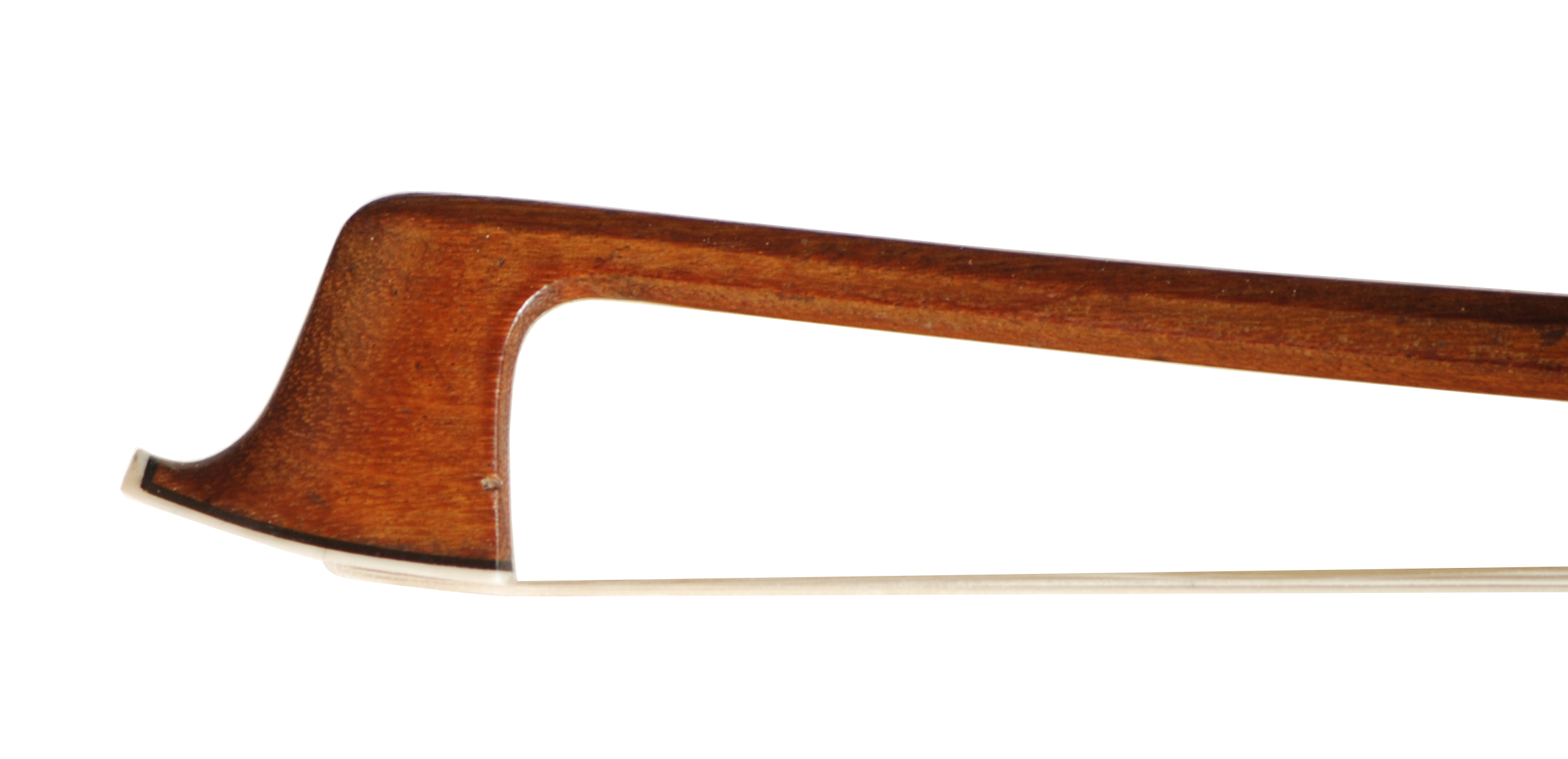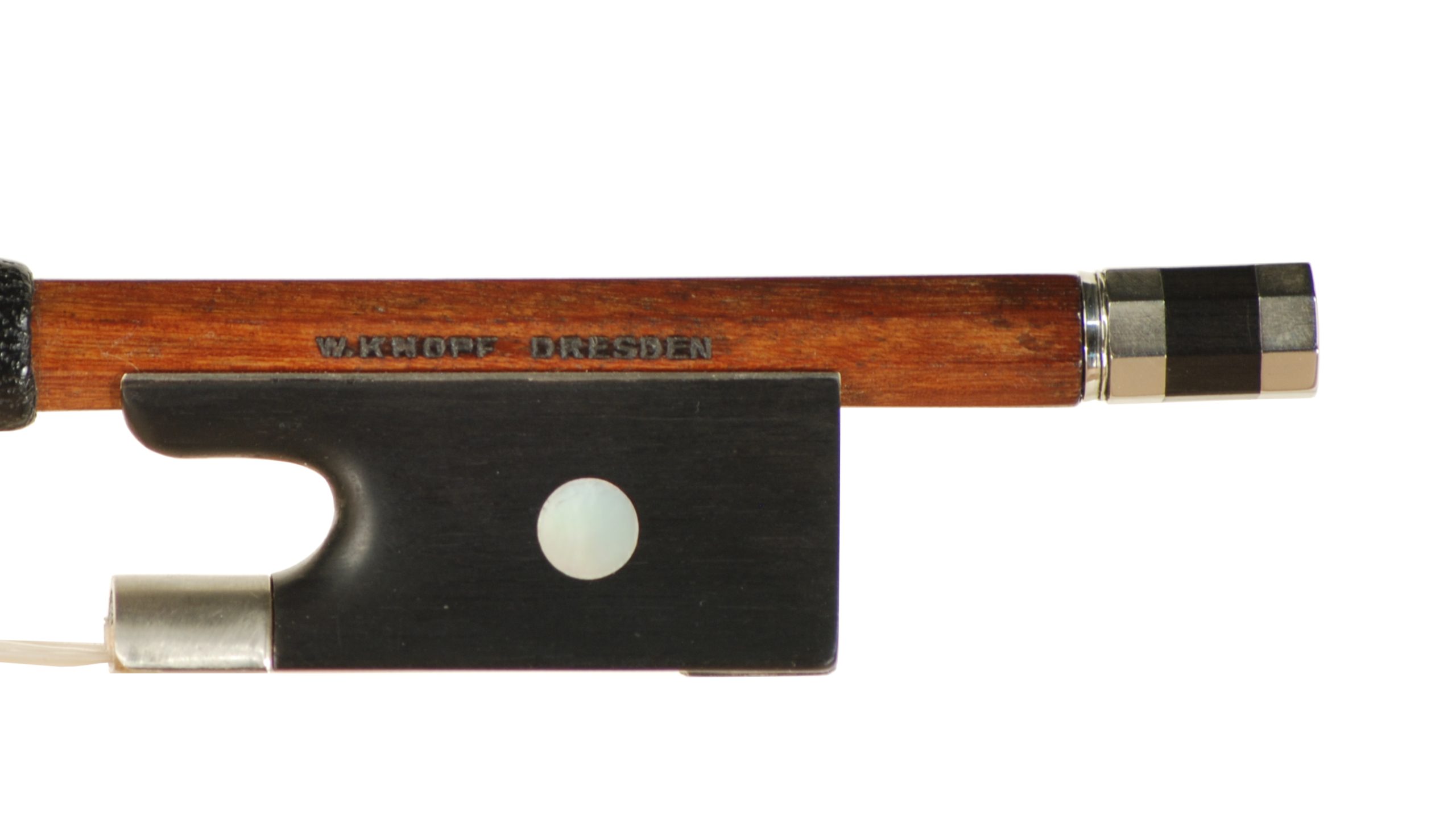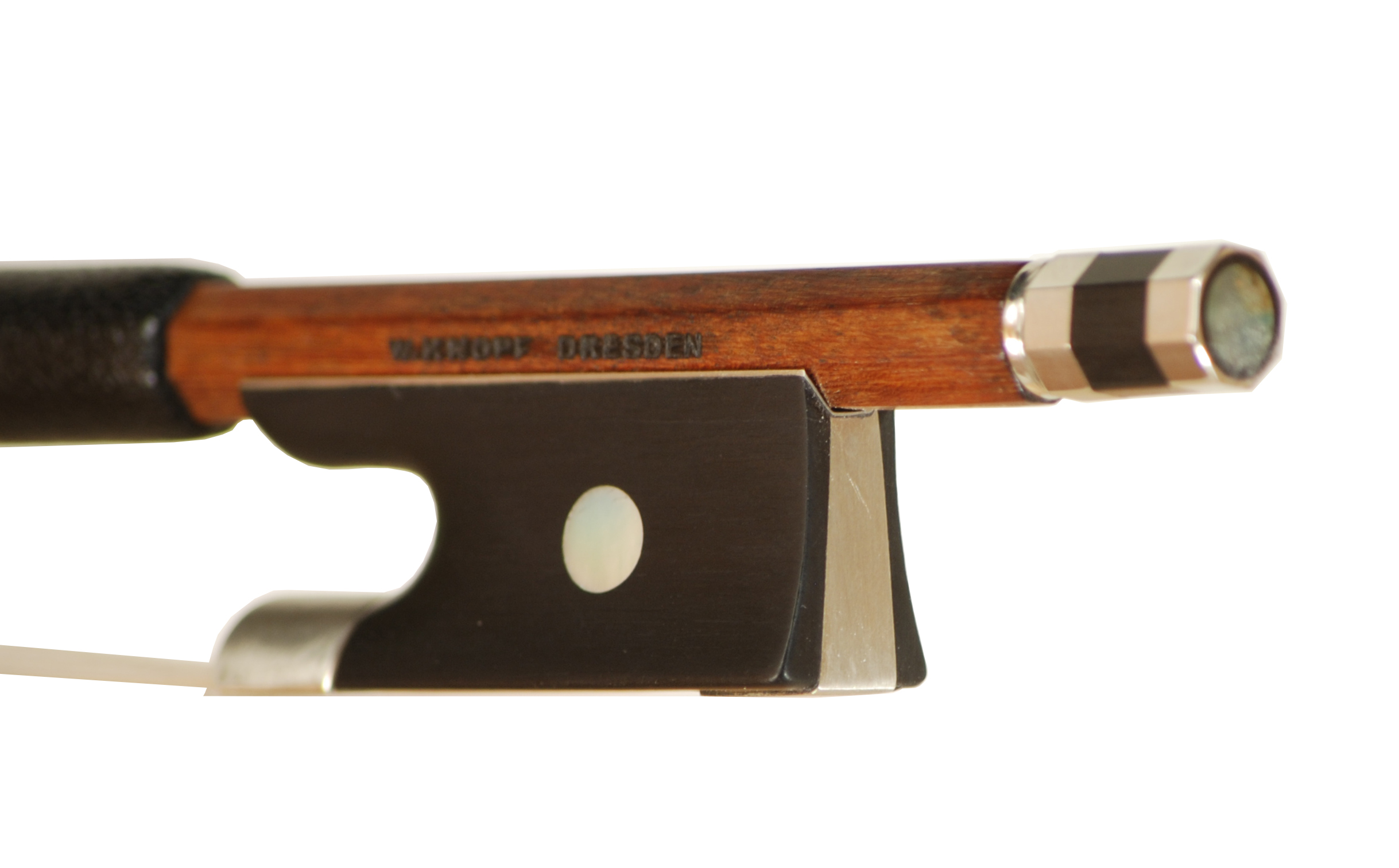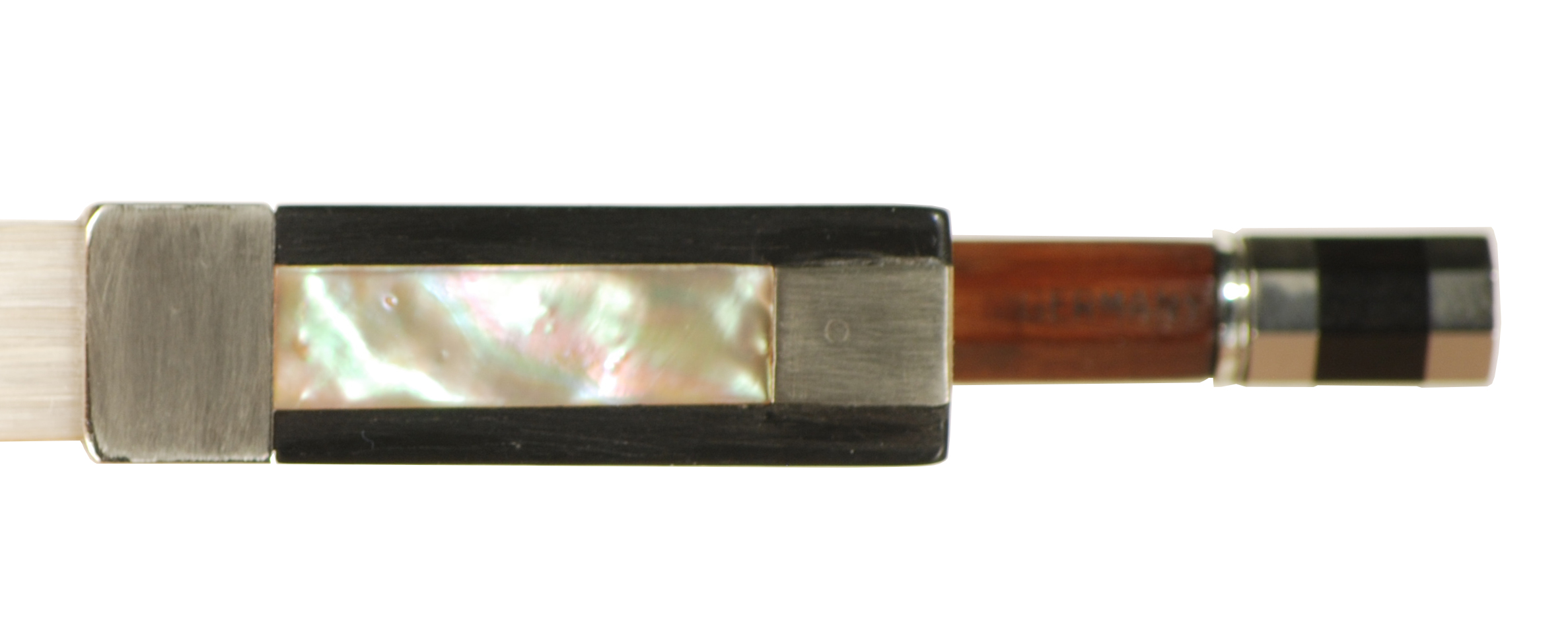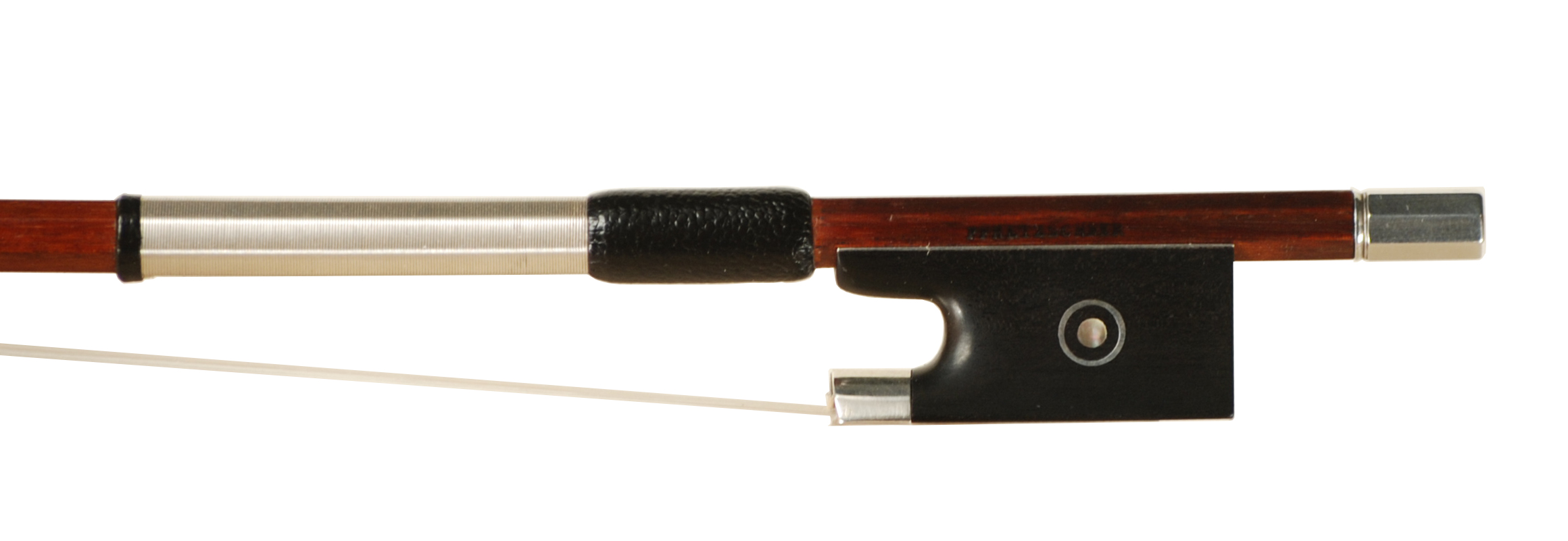Johann Wilhelm Knopf Workshop Violin Bow- Dresden circa 1886-1905 – CURRENTLY OUT ON TRIAL –
$1,895.00

Stamped:
GERMANY – on the butt of the bow
Bruce Babbitt has a statement in one of his bow books, “Everyone is in agreement that the modern perfection of the German bow started with Chrisitan Wilhelm Knopf. He was born in 1767 and listed as a bow maker in 1795, even though he probably started earlier.” Where he learned his craft is totally unknown, but his home still stands today and is now part of the Musical Instrument Museum of Markneukirchen. Undoubtably, five generations and about 16 makers from this family, many noted and highly respected somewhere along the time line, made an impact on Johann Wilhelm Knopf’s abilities.
Johann Wilhelm Knopf (1839-1912) was the illegitimate son of C. W. Knopf Jr. and was born shortly after his father’s death. It is assumed that he learned bow making from a member of the Knopf family. He was granted official citizenship in Markneukirchen shortly before his marriage in 1857. He then worked in Markneukirchen in the family workshop until 1886, when he set out to begin his own workshop in Dresden. He remained self-employed in Dresden until his death in 1912. His bows, stamped W. KNOPF DRESDEN, all come from his later working period. Bows stamped on the audience side were generally made from 1860 -1875.
Our W. Knopf workshop bow is pernambuco specie, octagonal in section, and nickel silver mount. We have only replaced the leather thumb grip. The head of the bow is typical of Knopf family bows, where the head is pulled slightly forward, and the back end of the head is slightly broader with good knife work in the chamfers. The pernambuco stick itself is planned well, not being a hefty, bigger than it needs to be stick. The bow is well proportioned in its engineering and in the choice of wood. The color is a light orange/brown varnish, thinly applied. The frog heel lining is one-piece, and the frog is squared to 90 degrees, not rounded. This was typical of Knopf family bows after 1860’s. Each facial of the frog has single mother-of-pearl eyes, and the ebony edges are worn smooth from normal playing wear. The ferrule extends a millimeter past the top of the throat while the lining has no pins; it’s fitted to a tee. The entire stick, head, and frog are in great condition. The bow is totally healthy, firm to a point, possessing good craftsmanship with no issues. A violin bow with 125 years of provenance with the entire unique story of players who owned the bow and a maker who managed to grow up, be successful in his trade, and miss World War I.
Weight fully haired 59.0 grams
